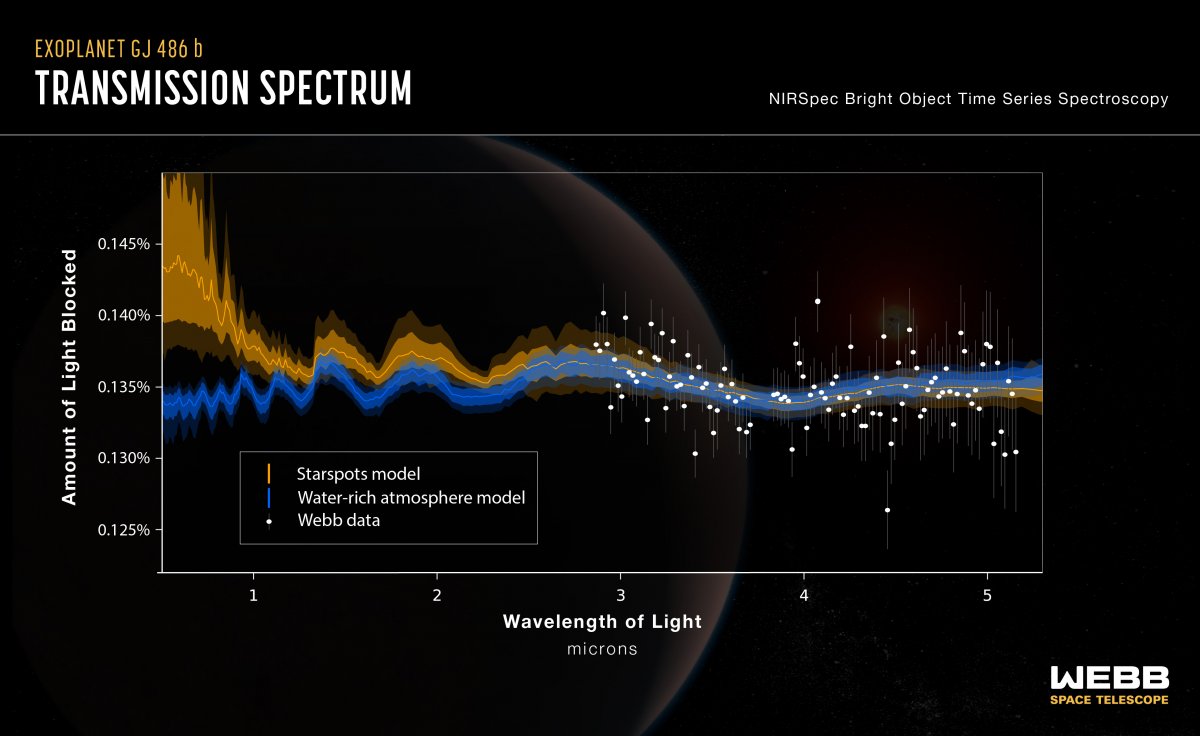A research group analyzing a rocky planet using the James Webb Space Telescope has found the signature of water vapor. However, it is unclear whether the track comes from the planet called GJ 486 b or from its star. NASA explains that both scenarios are equally plausible. If the water vapor exists on the exoplanet, it would be the first time that this has been discovered on a rocky planet. Until now, water has only been found on gas planets without a solid surface.
According to the research group led by Sarah Moran from the University of Arizona, the NIRSpec instrument was used to target two transits of GJ 486 b in front of its star. If the exoplanet has an atmosphere, traces of starlight can be found in a spectral analysis. In this case, the spectrum was mostly flat, but the shortest infrared wavelengths had an intriguing increase. Computer models had suggested that water vapor was the most likely cause.
Although most stars are too hot for water vapor, it can occur in star spots. In comparison, it is very cool there. Even in the sunspots of our home star, there is water vapor. Because the star GJ 486 is much cooler than our sun, there could be many more spots in its patches. However, there is no evidence that such spots appeared on the side facing us during the transit of the exoplanet.
The team is confident that further observations with the MIRI and NIRISS instruments can help clarify the precise origin of the water vapor. If it actually occurs on the exoplanet, it would most likely have to be constantly renewed because of the immense heat on the celestial body and the strong radiation of the star.
GJ 486 b is around 30% larger than Earth and takes 1.5 earth days to orbit its red dwarf star, so it is very close to it. It is not in the habitable zone, so water could only exist there as steam. The temperature on the surface is around 430 °C.
The analysis is published in the Astrophysical Journal Letters.



